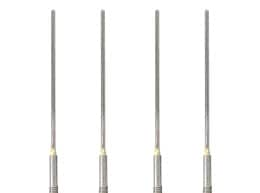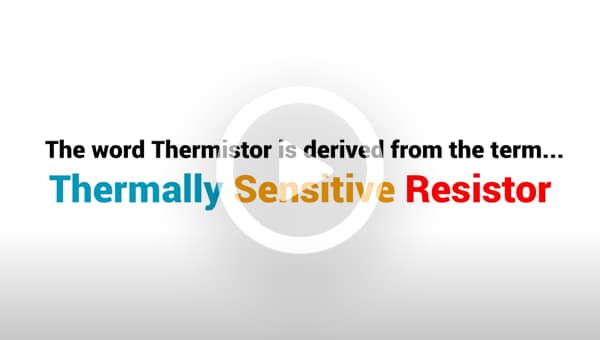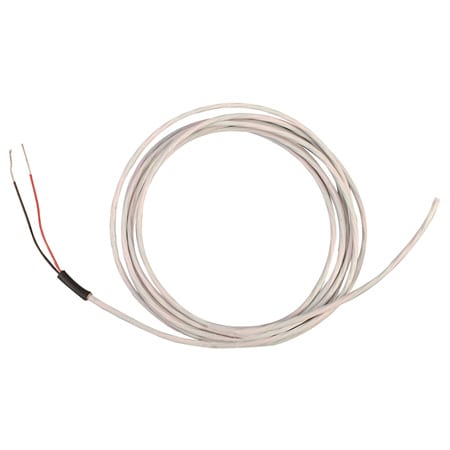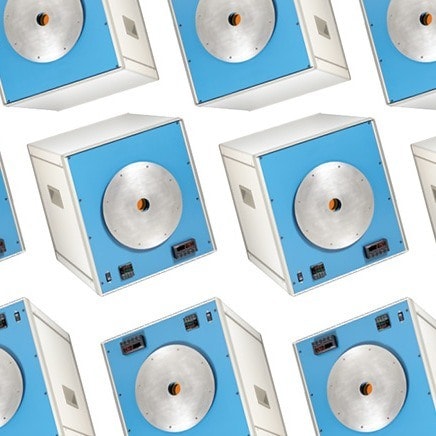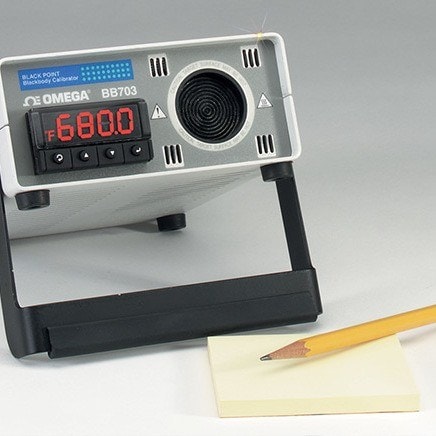Thermistors are a type of semiconductor that react like a resistor sensitive to temperature - meaning they have greater resistance than conducting materials, but lower resistance than insulating materials. To establish a temperature measurement, the measured value of a thermistor's electrical resistance can be correlated to the temperature of the environment in which that thermistor has been situated.
The term 'thermistor' is a portmanteau - it is derived from the term THERMally sensitive ResISTOR - and these devices are a very accurate and cost-effective option for temperature measurement.The reasons that thermistors continue to be popular for measuring temperature is: - Their higher resistance change per degree of temperature provides greater resolution - High level of repeatability and stability (±0.1
What Are Thermistors Composed Of?
The relationship between a thermistor's temperature and its resistance is highly dependent upon the materials from which it is composed. Thermistor manufacturers typically determine this property with a high degree of accuracy - as this is the primary characteristic of interest to thermistor buyers.Thermistors are made up of metallic oxides, binders, and stabilizers pressed into wafers and then cut to chip size, left in disc form, or made into another shape. The precise ratio of the composite materials governs their resistance/temperature "curve". Manufacturers typically control this ratio with great accuracy, as it determines how the thermistor will function.
Types of Thermistors
Thermistors are available in two types: those with Negative Temperature Coefficients (NTC Thermistors) and those with Positive Temperature Coefficients (PTC Thermistors). An NTC Thermistor's resistance decreases as its temperature increases. A PTC Thermistor's resistance increases as its temperature increases.NTC Thermistors are more commonly used for temperature measurement while PTC Thermistors are primarily used for circuit protection.
Thermistors are composed of materials with known resistance. As the temperature increases, an NTC Thermistor’s resistance will increase in a non-linear fashion, following a particular “curve.” The shape of this resistance vs. temperature curve is determined by the properties of the materials that make up the thermistor.
Thermistors are available with a variety of base resistances and resistance vs. temperature curves. Low-temperature applications (-55 to approx. 70°C) generally use lower resistance thermistors 2252 to 10,000Ω). Higher temperature applications generally use higher resistance thermistors (above 10,000Ω). Some materials provide better stability than others. Resistances are normally specified at 25°C (77°F). Thermistors are accurate to approximately ± 0.2°C within their specified temperature range. They’re generally durable, long-lasting, and inexpensive.
Thermistors with epoxy coatings are available for use at lower temperatures [typically -50 to 150°C (-58 to 316°F)]; thermistors are also available with glass coatings for use at higher temperatures [typically -50 to 300°C (-58 to 572°F)]. These coatings protect the thermistor and its connecting wires from humidity, corrosion, and mechanical stress.
Available Thermistor Configurations
Thermistors are available in several common configurations. The three most frequently employed are the hermetically sealed flexible thermistor (HSTH series), the bolt-on/washer type, and the self-adhesive surface-mount style.HSTH Thermistors are completely sealed within PFA (plastic polymer) jackets to protect the sensing element from moisture and corrosion. They can be used to measure the temperature of an array of liquids ranging from oils and industrial chemicals to foods.
Thermistors with bolt- or washer-mounted sensors can be installed into standard-sized threaded holes or openings. Their small thermal mass enables them to respond to temperature changes rapidly. They’re used in many applications including household appliances, water tanks, pipes, and equipment casings.
Surface-mounted thermistors come with adhesive exteriors that can easily be stuck in place on flat or curved surfaces. They can be removed and re-applied and have several commercial and industrial applications.
Temperature Range, Accuracy and Stability
Thermistors are highly accurate (ranging from ± 0.05°C to ± 1.5°C), but only over a limited temperature range that is within about 50°C of a base temperature. The working temperature range for most thermistors is between 0°C and 100°C. Class A thermistors offer the greatest accuracy, while Class B thermistors can be used in scenarios where there’s less need for exact measurement. Once the manufacturing process is complete, thermistors are chemically stable and their accuracy does not change significantly with age.Common Applications for Thermistors
Thermistors are often selected for applications where ruggedness, reliability, and stability are important. They’re well suited for use in environments with extreme conditions, or where electronic noise is present. They’re available in a variety of shapes: the ideal shape for a particular application depends on whether the thermistor will be surface-mounted or embedded in a system, and on the type of material being measured. Thermistors are employed in a broad array of commercial and industrial applications to measure the temperature of surfaces, liquids, and ambient gasses. When sheathed in protective probes that can be reliably sanitized, they’re used in the food and beverage industries, in scientific laboratories, and in R&D. Heavy-duty probe-mounted thermistors are suitable for immersion in corrosive fluids, and can be used in industrial processes, while vinyl-tipped thermistor mounts are used outdoors or for biological applications. Thermistors are also available with metal or plastic cage-style element covers for air temperature measurement.How Are Thermistors Wired?
Thermistors are very simple to wire. Most come with two-wire connectors. The same two wires that connect the thermistor to its excitation source can be used to measure the voltage across the thermistor.
